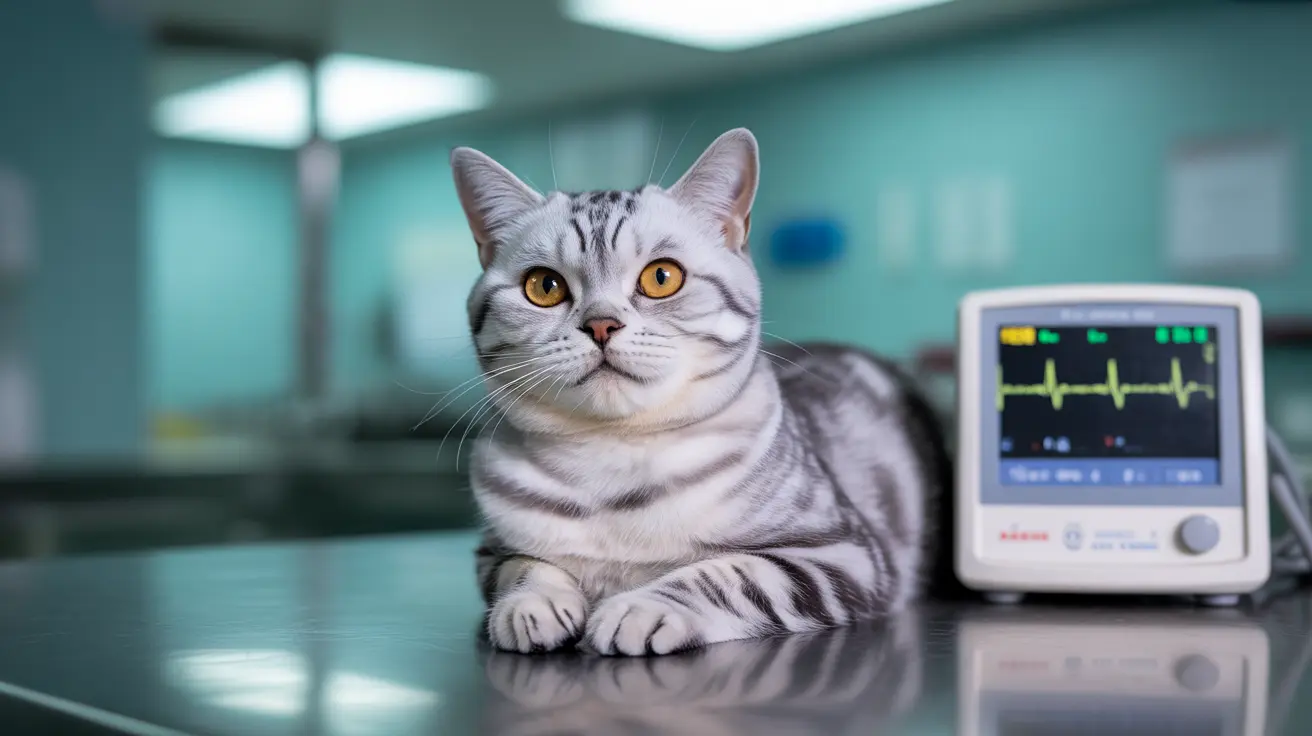Introduction
When cats experience blunt heart trauma, whether from falls, accidents, or other impacts, they can develop a serious condition known as cardiac arrhythmia. These irregular heartbeats can range from mild to life-threatening, making immediate veterinary attention crucial. Understanding how these arrhythmias develop, recognizing their signs, and knowing the available treatment options can make a significant difference in your cat's recovery.
In this comprehensive guide, we'll explore everything pet owners need to know about arrhythmias after blunt heart trauma in cats, from initial diagnosis through treatment and long-term management.
Understanding Blunt Heart Trauma and Its Effects
Blunt heart trauma typically occurs when a cat experiences a significant impact to their chest area. This can happen during car accidents, falls from heights, or other traumatic incidents. The force of impact can bruise the heart muscle (myocardial contusion) or damage the electrical conduction system that controls the heart's rhythm.
These injuries can lead to various types of arrhythmias, with ventricular premature complexes and ventricular tachycardia being the most common. While many cases resolve within days with proper treatment, some can become serious if left unaddressed.
Recognizing the Warning Signs
Early detection of arrhythmias can significantly improve outcomes. Key symptoms to watch for include:
- Sudden weakness or collapse
- Irregular heartbeat
- Difficulty breathing
- Lethargy and decreased activity
- Loss of appetite
- Fainting episodes
- Bluish tinge to gums or tongue
Diagnostic Process and Assessment
When a cat presents with suspected cardiac arrhythmia following trauma, veterinarians employ several diagnostic tools:
- Electrocardiogram (ECG) to record heart rhythm
- Chest X-rays to assess structural damage
- Blood tests to check cardiac enzymes
- Echocardiogram to evaluate heart function
- Continuous monitoring for rhythm changes
Treatment Approaches and Management
Treatment for trauma-induced arrhythmias typically involves a multi-faceted approach:
Immediate Care
- Oxygen therapy
- Intravenous fluids
- Pain management
- Treatment of concurrent injuries
Cardiac-Specific Treatment
- Antiarrhythmic medications when necessary
- Continuous cardiac monitoring
- Management of underlying trauma
- Supportive care for other affected systems
Recovery and Long-term Outlook
Most cats with trauma-induced arrhythmias have a positive prognosis if they receive prompt and appropriate treatment. The majority of cases resolve within 2-5 days, though some may require longer monitoring. Following the acute phase, many cats can return to normal activities without ongoing cardiac medications.
Preventive Measures and Future Care
While not all traumatic incidents can be prevented, certain measures can reduce risks:
- Keeping cats indoors or in secured outdoor spaces
- Regular veterinary check-ups
- Prompt medical attention after any trauma
- Monitoring for recurring symptoms
Frequently Asked Questions
What are the common causes of arrhythmias in cats after experiencing blunt heart trauma?
Common causes include car accidents, falls from heights, direct blows to the chest, and crushing injuries. The trauma can damage the heart muscle or its electrical conduction system, leading to irregular heartbeats.
How do veterinarians diagnose arrhythmias in cats following a traumatic event?
Veterinarians use a combination of diagnostic tools including ECGs, chest X-rays, blood tests, and echocardiograms. Continuous monitoring may also be necessary to track heart rhythm changes over time.
What are the typical symptoms that indicate my cat may have developed arrhythmias after blunt trauma?
Key symptoms include irregular heartbeat, weakness, collapse, difficulty breathing, lethargy, decreased appetite, and in severe cases, fainting episodes or sudden loss of consciousness.
How are arrhythmias treated in cats following blunt heart trauma, and what is the typical duration of treatment?
Treatment typically includes supportive care, possible antiarrhythmic medications, and management of concurrent injuries. Most cases resolve within 2-5 days, though some may require longer treatment periods.
What is the prognosis for cats with arrhythmias resulting from blunt trauma, and what factors influence recovery?
The prognosis is generally good with prompt treatment, especially if there are no severe concurrent injuries. Recovery depends on factors such as the severity of the trauma, timing of treatment, and presence of other complications.






